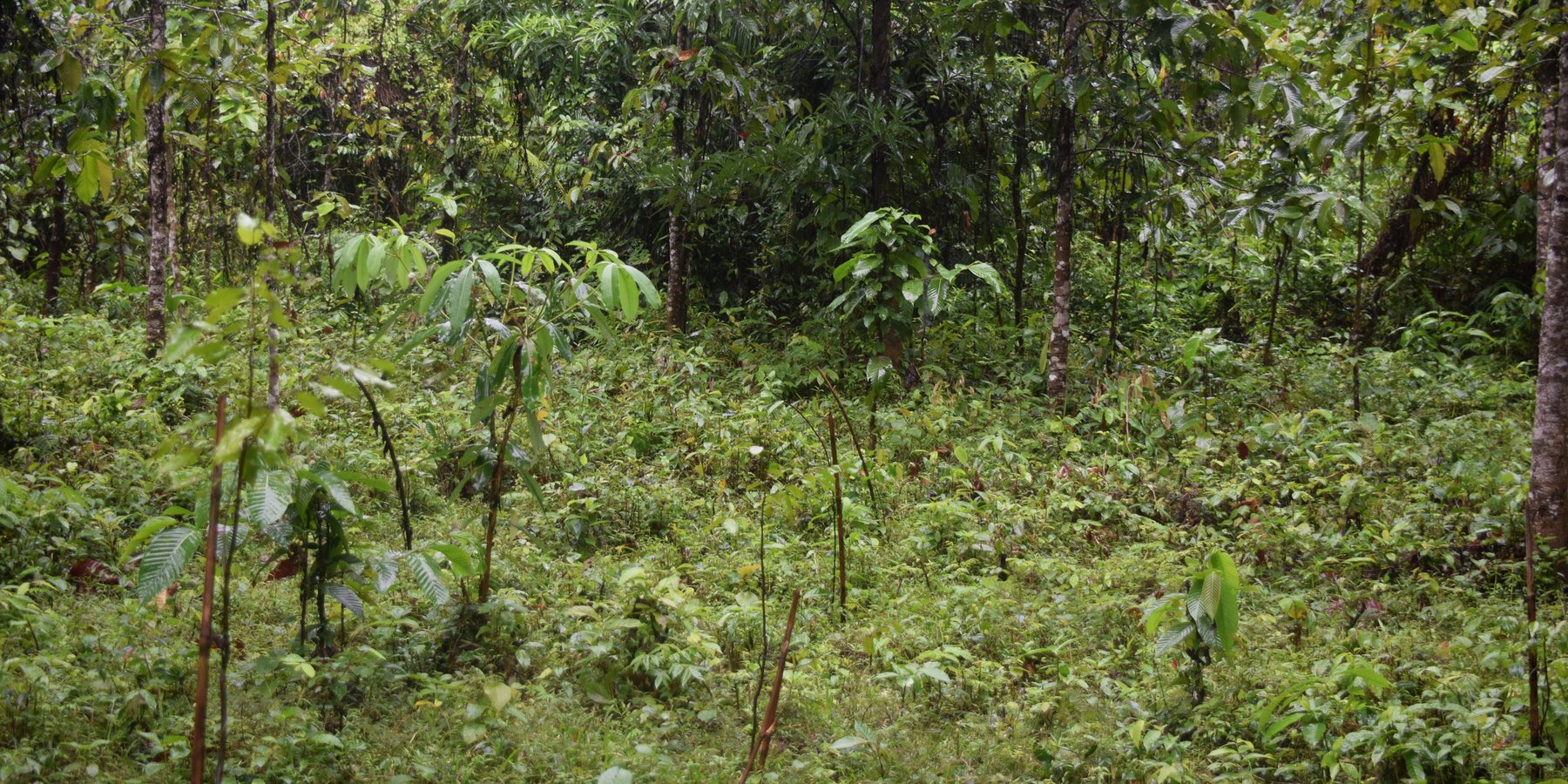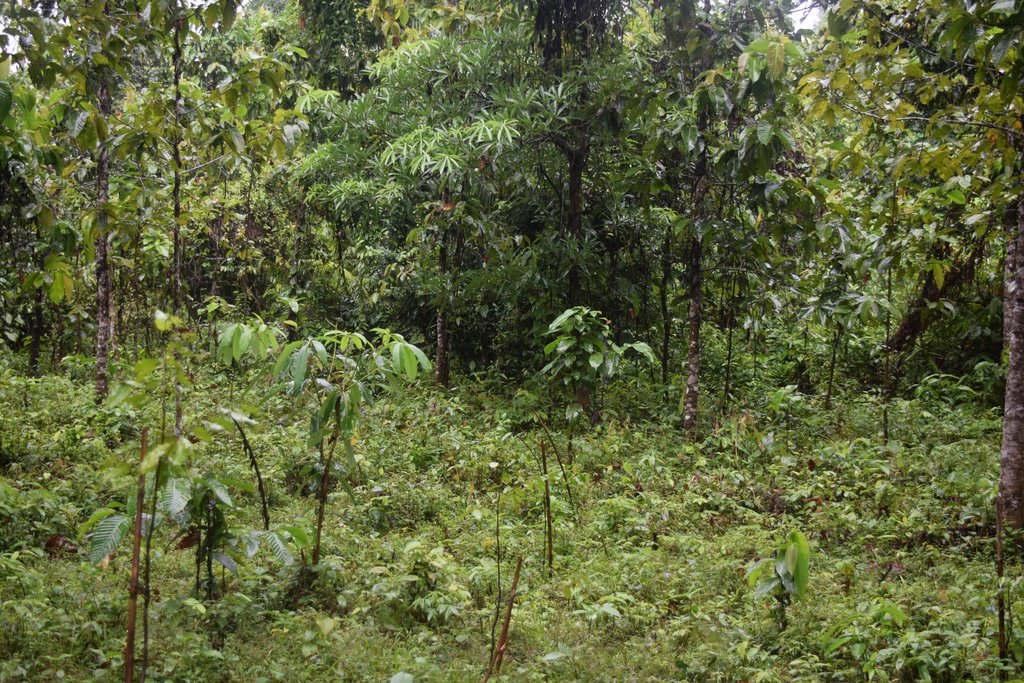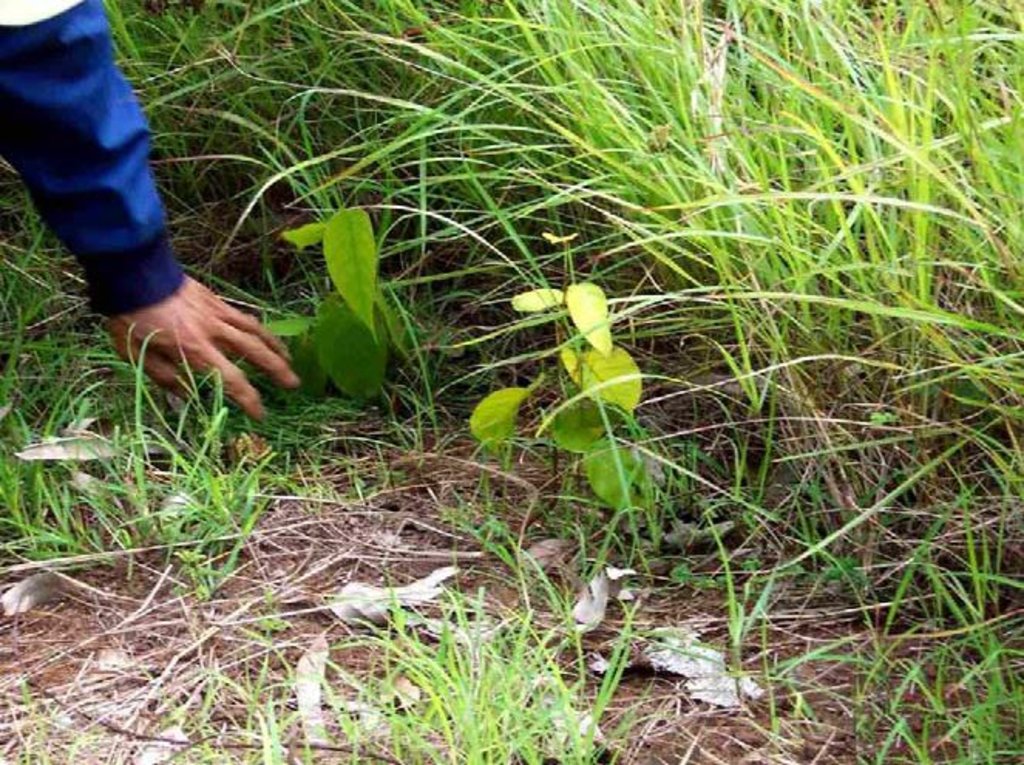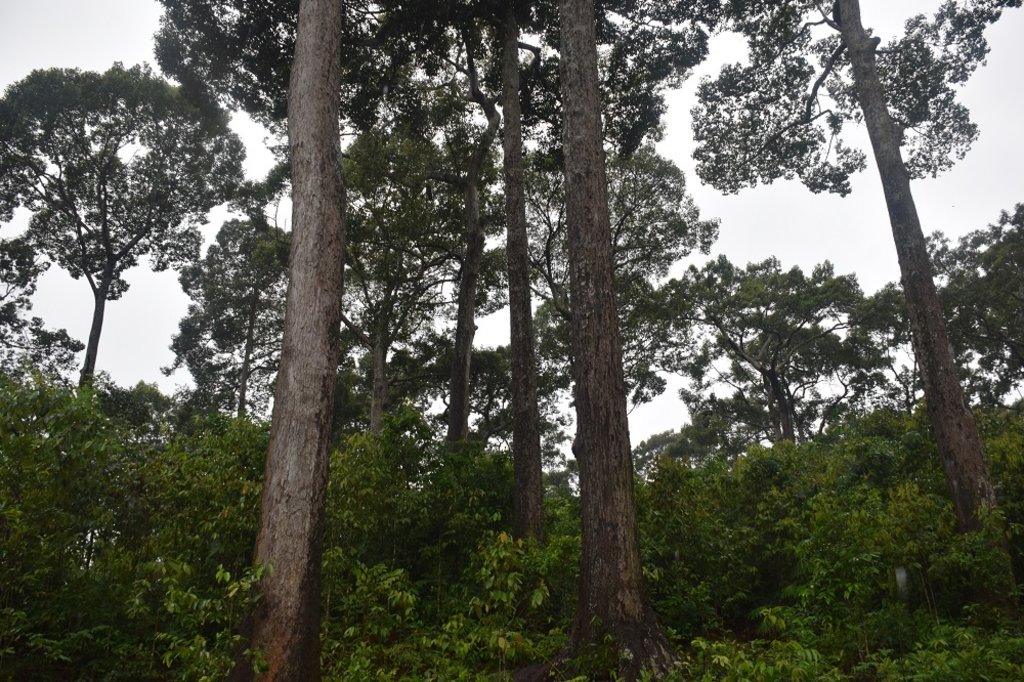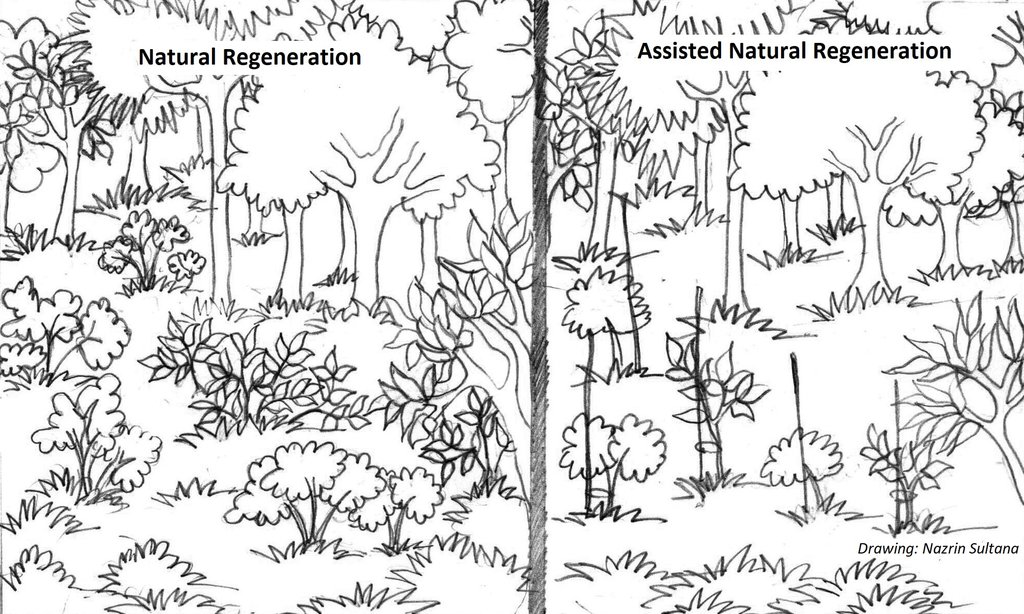Assisted Natural Regeneration [بنغلاديش]
- تاريخ الإنشاء:
- تحديث:
- جامع المعلومات: Fazlay Arafat
- المحرر: –
- المراجعون: Nicole Harari, Rima Mekdaschi Studer, Ursula Gaemperli
ANR
technologies_4372 - بنغلاديش
عرض الأقسام
توسيع الكل طي الكل1. معلومات عامة
1.2 تفاصيل الاتصال بالأشخاص الرئيسيين لمصدر المعلومات والمؤسسات المشاركة في تقييم وتوثيق التقنية
الشخص (الأشخاص) الرئيسي لمصدر المعلومات
مستخدم الأرض:
Morshed Hoq Mahabub
Bangladesh Forest Department
بنغلاديش
مستخدم الأرض:
Islam Md. Saiful
Bangladesh Forest Department
بنغلاديش
مستخدم الأرض:
Rahman Md.
Community Patrolling Group (CPG), Medhakocchopia
بنغلاديش
اسم المشروع الذي سهّل توثيق/تقييم التقنية (إذا كان ذلك على صلة)
Decision Support for Mainstreaming and Scaling out Sustainable Land Management (GEF-FAO / DS-SLM)اسم المؤسسة (المؤسسات) التي سهلت توثيق/تقييم التقنية (إذا كان ذلك على صلة)
Bangladesh Forest Department (Bangladesh Forest Department) - بنغلاديشاسم المؤسسة (المؤسسات) التي سهلت توثيق/تقييم التقنية (إذا كان ذلك على صلة)
FAO Bangladesh (FAO Bangladesh) - بنغلاديش1.3 الشروط المتعلقة باستخدام البيانات الموثقة من خلال WOCAT
يوافق جامع المعلومات والشخص (لاشخاص) الرئيسي لمصدر المعلومات على الشروط المتعلقة باستخدام البيانات الموثقة من خلال WOCAT:
نعم
1.4 إعلان بشأن استدامة التقنية الموصوفة
هل التقنية الموصوفة هنا تمثل مشكلة فيما يتعلق بتدهور الأراضي، بحيث لا يمكن إعلانها تقنية مستدامة لإدارة الأراضي؟:
كلا
2. وصف تقنيةالإدارة المستدامي للأراضي
2.1 وصف مختصر للتقنية
تعريف التقنية:
Assisted natural regeneration (ANR) is a simple, low-cost forest restoration method that can effectively convert deforested lands to more productive forests.
2.2 وصف تفصيلي للتقنية
الوصف:
Medhakachapia National Park (MKNP) is nationally known for protecting the most extensive stands of mature critically endangered Garjan (Dipterocarpus turbinatus) trees in Bangladesh. Other native trees present in MKNP include Telsur Hopea odorata, Boilam Anisoptera scaphula, Gamar Gmelina arborea and Chapalish Artocarpus chaplasha. MKNP is tropical semi-evergreen forest in the low hills of the Fulchari Forest Range and covers 396 hectares. The park is located in Chakaria Upazila, not far from Cox’s Bazar in the southeast part of the country. Originally, the entire park area was densely covered with Garjan forest, but now there are about 9000 mature Garjan trees as many parts have been encroached upon with agriculture. MKNP is bordered by 13 villages where most of the people depend directly or indirectly upon the forest. Encroachment by settlements and agriculture has been associated with illegal tree cutting, hunting, and collection of fuel wood, bamboo and cane and other forest products. These activities are encouraged by sawmills in the vicinity and unemployment. Due to reduced canopy coverage, the forest soils have been exposed degraded. In order to restore forest health, the Bangladesh Forest Department introduced Assisted Natural Regeneration (ANR) practice. The access for public recreation and education and research is allowed inside national park. However, the collection of fuel woods and non-timber forest product from national park area by the local communities is a common scenario here.
ANR aims to accelerate, rather than replace, natural succession processes by removing or reducing barriers to natural forest regeneration such as competition with weedy species and recurring disturbances (e.g., fuel wood collection, grazing, fire and wood harvesting). Compared to conventional reforestation methods, which involve planting tree seedlings, ANR offers the significant advantage avoiding costs associated with propagating, raising, and planting seedlings. ANR is most effectively utilized at the landscape level in restoring the forest protective functions, such as soil protection, and is most suitable for restoring areas where some level of natural succession is already in progress. ANR offers distinct advantages over other forest restoration methods but also has some limitations. ANR is much cheaper to implement and can be applied over larger areas than other restoration planting approaches, but may be less effective in enhancing floristic diversity at the initial stages. Some of ANR’s disadvantages can be overcome by enrichment planting with desirable species. ANR aims to accelerate, rather than replace natural succession process by removing or reducing barriers to natural forest regeneration.
Soil degradation of MKNP has been greatly reduced through practicing ANR and co-management. In MKNP co-management was established on 2009 engaging local communities. As a part of co-management activities, the Forest Department (FD) formed a Community Patrolling Group (CPG) with 35 members from the local community to protect the Garjan trees and look after the whole forest along with forester officers. Under the support from Climate-Resilient Ecosystems and Livelihoods (CREL) project of USAID, the CPG along with FD intensively patrol the forest in rotating groups to ensure that no harm is done to the mature trees and natural seedlings. As a result, sufficient tree regeneration is now taking place and their growth is accelerating. Even where weeds dominate, seedlings of pioneer tree species are often found. The minimum required number of preexisting seedlings to implement ANR depends on the acceptable length of time for the forest to be restored and site-specific conditions that influence the rate of forest recovery. As a general reference, a density range of 200–800 seedlings/ha (>15 cm in height; counting clumps in 1 m2 as one seedling) has been suggested for ANR reforestation, and it has been estimated that at least 700 seedlings/ha are needed during the early treatment period in order to achieve canopy closure within three years. Although the forest restored through ANR in MKNP will have lower commercial value in terms of timber, it will support greater biodiversity and more effectively provide for the subsistence needs of the local people compared to commercial plantations.
2.3 صور التقنية
2.5 البلد/المنطقة/المواقع التي تم تنفيذ التقنية فيها والتي يغطيها هذا التقييم
البلد:
بنغلاديش
المنطقة/الولاية/المحافظة:
Chittagong division
مزيد من التفاصيل حول الموقع:
Medakacchapia National Park under Cox's Bazar North Forest division
حدد انتشار التقنية:
- منتشرة بالتساوي على مساحة
إذا كانت المساحة الدقيقة غير معروفة، فيرجى الإشارة إلى المنطقة التقريبية المغطاة:
- 10-1 كم2
هل يقع موقع/مواقع التقنية في منطقة محمية بشكل دائم؟:
نعم
إذا كانت الإجابة بنعم، حدد:
Medakacchapia is a National Park with an area of 395.92 ha. In Bangladesh, the access for public recreation and education/research is allowed inside national park. However, the collection of fuel woods and non-timber forest product from national park area by the local communities is a common scenario here.
Map
×2.6 تاريخ التنفيذ
اذكر سنة التنفيذ:
2014
2.7 إدخال التقنية
حدد كيف تم إدخال التقنية:
- من خلال المشاريع/ التدخلات الخارجية
التعليقات (نوع المشروع، الخ):
Climate-Resilient Ecosystems and Livelihoods (CREL) project of USAID
3. تصنيف تقنية الإدارة المستدامي للأراضي
3.1 الغرض الرئيسي ( الأغراض الرئيسية) للتقنية
- الحد من تدهور الأراضي ومنعه وعكسه
- الحفاظ على النظام البيئي
- الحفاظ على/تحسين التنوع البيولوجي
- خلق أثر اجتماعي مفيد
3.2 نوع (أنواع) استخدام الأراضي الحالية حيث يتم تطبيق التقنية
استخدامات الأراضي مختلطة ضمن نفس وحدة الأرض:
كلا

الغابات/ الأراضي الحرجية
- الغابات/الأراضي الحرجية (شبه) الطبيعية
الغابات/الأراضي الحرجية (شبه) الطبيعية: حدد نوع الإدارة:
- إزالة الخشب الميت/مخلفات التقليم
- Tropical semi-evergreen forest
- Dipterocarpus turbinatus, Syzygium grande, Chukrasia tabularis, Hopea odorata
هل الأشجار المذكورة أعلاه ملحاء أم دائمة الخضرة؟:
- مختلطة ملحاء / دائمة الخضرة
منتجات وخدمات:
- الخشب
- حطب الوقود
- الفواكه والمكسرات
- حفظ/حماية الطبيعة
- الترفيه / السياحة
- Oil from Dipterocarpus turbinatus
3.3 هل تغير استخدام الأراضي نتيجة لتنفيذ التقنية؟
هل تغير استخدام الأراضي نتيجة لتنفيذ التقنية؟:
- لا (تابع مع السؤال 3.4)
3.4 إمدادات المياه
إمدادات المياه للأرض التي يتم تنفيذ التقنية عليها:
- بعلية
3.5 مجموعةالإدارة المستدامة للأراضي التي تنتمي إليها هذه التقنية
- إدارة الغابات الطبيعية وشبه الطبيعية
- تحسين الغطاء الأرضي/النباتي
3.6 التدابير التقنية في مجال إلادارة المستدامة للأراضي

التدابير النباتية
- V1: غطاء من الأشجار والشجيرات

التدابير الإدارية
- M2: تغيير في مستوى الإدارة/الكثافة
التعليقات:
Earlier the ground vegetation was suppressed by weeds and non-valuable plant species. Various alien invasive plant species also disturbed the natural succession process of these area. The management practice also changed from plantation in vacant area to assisted natural regeneration with the involvement of local community.
3.7 الأنواع الرئيسية من تدهور الأراضي التي تناولتها التقنية

تآكل التربة بالمياه
- الوزن(Wt): فقدان التربة السطحية/تآكل السطح
- (Wg):الانجراف الخلجاني/ الخلجان

التدهور البيولوجي
- (Bc): تناقص الغطاء النباتي
- (Bq): انخفاض الكمية/الكتلة الحيوية
- (Bs): انخفاض جودة وتركيبة الأنواع/التنوع
3.8 منع أو حد أو عكس تدهور الأراضي
تحديد هدف التقنية فيما يتعلق بتدهور الأراضي:
- الحد من تدهور الأراضي
التعليقات:
Canopy coverage of the area were poor and top soil erosion occurred due to exposed forest cover. Through ANR the canopy coverage will be regained and reduce land degradation.
4. المواصفات الفنية، وأنشطة التنفيذ، والمدخلات، والتكاليف
4.1 الرسم الفني للتقنية
المواصفات الفنية (المتعلقة بالرسم الفني):
Step 1: Marking of Woody Regeneration
Once the target area is identified and its boundaries are demarcated, the site is surveyed to assess its succession status and to locate any natural woody regeneration growing in the weedy vegetation. The located seedlings should be clearly marked with stakes. Decision on the minimum size of seedlings to be protected and released depends on the density and distribution of seedlings in the area, as well as budget and time constraints. However, the seedlings should be large enough to have a reasonable chance of survival.
Step 2: Liberation and Tending of Woody Regeneration
The next step is to accelerate the growth of the marked seedlings by reducing competition from the weedy species for water, nutrients, and light. The initial weeding and climber cutting should be implemented at the onset of the rainy season so that the liberated seedlings will have the full growing season of accelerated growth. All competing vegetation such as weeds and climbers within at least 0.5 m radius around the stem of the marked seedlings are removed. In some cases, clumps of woody seedlings may need to be thinned in order to liberate the largest individuals or the more desirable species.
Step 3: Protection from Disturbance.
Protecting against fire and other forms of disturbance is the most important ANR activity. Establishing firebreaks around blocks of ANR-treated sites is important, if the area is prone to fire. If animal grazing is prevalent in the area, fencing should be established, or patrols/guards should be assigned to protect the site from such activity. Long-term community involvement and support is critical in preventing the re-occurrence of disturbance events that will set back succession to the before-treatment state.
Step 4: Maintenance and Enrichment Planting.
It is suggested that the maintenance of weeding, and liberation of any additional seedlings that establish or that are newly found, should be conducted three times in first two years and two times in next two years. In the fifth year one climber cutting should be conducted in rainy season. The frequency of maintenance operations can be adjusted according to field observation and monitoring data on the growth of the liberated seedlings and the density of natural woody regeneration. Enrichment planting can also be carried out to accelerate canopy closure, add useful tree species, and increase floral diversity. Even after the restoration of canopy cover, large-seeded primary forest trees and rare species are unlikely to colonize naturally. If restoring some of the floral diversity of the original forest is one of the restoration objectives, species or functional groups of trees lacking in natural regeneration will need to be planted either at the initial treatment stage or after canopy closure depending on the ecological requirements of the species.
المؤلف:
Nazrin Sultana
التاريخ:
16/04/2019
4.2 معلومات عامة بخصوص حساب المدخلات والتكاليف
حدد كيفية احتساب التكاليف والمدخلات:
- حسب مساحة تنفيذ التقنية
الإشارة إلى حجم ووحدة المساحة:
1 hectare
في حالة استخدام وحدة مساحة محلية، قم بالإشارة إلى عامل التحويل إلى هكتار واحد (على سبيل المثال، 1 هكتار = 2.47 فدان): 1 هكتار =:
1 ha = 2.47 acres
عملة أخرى/ عملة وطنية (حدد):
BDT
إذا كان ذا صلة، وضح سعر الصرف من الدولار الأمريكي إلى العملة المحلية (على سبيل المثال، 1 دولار أمريكي = 79.9 ريال برازيلي): 1 دولار أمريكي =:
84,0
اذكر متوسط تكلفة أجر العمالة المستأجرة في اليوم الواحد:
500 BDT
4.3 أنشطة التأسيس
| النشاط | التوقيت (الموسم) | |
|---|---|---|
| 1. | Site preparation (Boundary demarcation, site map preparation with GPS, marking of woody regeneration) | May-June |
| 2. | Care and maintenance of natural regeneration (liberation and tending of woody regeneration, protection from disturbance) | June-July |
4.4 التكاليف والمدخلات اللازمة للتأسيس
| تحديد المدخلات | الوحدة | الكمية | التكاليف لكل وحدة | إجمالي التكاليف لكل مدخل | % من التكاليف التي يتحملها مستخدمو الأراضي | |
|---|---|---|---|---|---|---|
| العمالة | Survey for map preparation and marking of woody regeneration | person-days | 1,0 | 500,0 | 500,0 | |
| العمالة | Tying up seedlings and young trees | person-days | 4,0 | 500,0 | 2000,0 | |
| العمالة | Tending of woody regeneration | person-days | 10,0 | 500,0 | 5000,0 | |
| العمالة | Application of fertilizers | person-days | 4,0 | 500,0 | 2000,0 | |
| معدات | Weeding equipment (manual weeding tool) | lump sum | 1,0 | 1000,0 | 1000,0 | |
| معدات | Bamboo sticks for tying up seedlings | pieces | 800,0 | 2,0 | 1600,0 | |
| معدات | Rope | lump sum | 1,0 | 1000,0 | 1000,0 | |
| الأسمدة والمبيدات الحيوية | Compost fertilizer | Kg | 625,0 | 4,0 | 2500,0 | |
| مواد البناء | Rod, Cement, Sand, Khoa, etc for RCC signboard | Lump sum | 1,0 | 1000,0 | 1000,0 | |
| إجمالي تكاليف إنشاء التقنية | 16600,0 | |||||
| إجمالي تكاليف إنشاء التقنية بالدولار الأمريكي | 197,62 | |||||
إذا تحمل مستخدم الأرض أقل من 100% من التكاليف، حدد من قام بتغطية التكاليف المتبقية:
Bangladesh forest department is the land user and the total cost of the establishment borne by CREL project
4.5 الصيانة/الأنشطة المتكررة
| النشاط | التوقيت/الوتيرة | |
|---|---|---|
| 1. | 1st year weeding | 3 times |
| 2. | 2nd year weeding | 3 times |
| 3. | 3rd year weeding | 2 times |
| 4. | 4th year weeding | 2 times |
| 5. | 5th year climber cutting | 1 time |
4.6 التكاليف والمدخلات اللازمة للصيانة/للأنشطة المتكررة (سنويًا)
| تحديد المدخلات | الوحدة | الكمية | التكاليف لكل وحدة | إجمالي التكاليف لكل مدخل | % من التكاليف التي يتحملها مستخدمو الأراضي | |
|---|---|---|---|---|---|---|
| العمالة | 1st year weeding | person-days | 15,0 | 500,0 | 7500,0 | |
| العمالة | 2nd year weeding | person-days | 15,0 | 500,0 | 7500,0 | |
| العمالة | 3rd year weeding | person-days | 10,0 | 500,0 | 5000,0 | |
| العمالة | 4th year weeding and 5th year climber cutting | person-days | 15,0 | 500,0 | 7500,0 | 100,0 |
| معدات | Weeding equipment (manual weeding tools) | lump sum | 1,0 | 1000,0 | 1000,0 | |
| إجمالي تكاليف صيانة التقنية | 28500,0 | |||||
| إجمالي تكاليف صيانة التقنية بالدولار الأمريكي | 339,29 | |||||
إذا تحمل مستخدم الأرض أقل من 100% من التكاليف، حدد من قام بتغطية التكاليف المتبقية:
The 4th year weeding and 5th year climber cutting borne by forest department
4.7 أهم العوامل المؤثرة على التكاليف
قدم وصفا لأهم العوامل التي تؤثر على التكاليف:
The most important factor affecting the costs is labor
5. البيئة الطبيعية والبشرية
5.1 المناخ
هطول الأمطار السنوي
- < 250 مم
- 251- 500 ملم
- 501 - 750ملم
- 1,000-751 ملم
- 1,500-1,100 ملم
- 2,000-1,500 ملم
- 3,000-2,001 ملم
- 4,000-3,100 ملم
- > 4000 ملم
حدد متوسط هطول الأمطار السنوي (إذا كان معروفًا)، بالملليمتر:
3770,00
المواصفات/التعليقات على هطول الأمطار:
The driest month is December. The greatest amount of precipitation occurs in June.
المنطقة المناخية الزراعية
- رطبة
Mean annual temperature is 25.6 °C
5.2 طوبوغرافيا
متوسط الانحدارات:
- مسطح (0-2%)
- بسيط (3-5%)
- معتدل (6-10%)
- متدحرج (11-15%)
- تلال (16-30%)
- شديدة الانحدار(31-60%)
- فائقة الانحدار (>60%)
التضاريس:
- هضاب/سهول
- أثلام مرتفعة
- المنحدرات الجبلية
- منحدرات التلال
- منحدرات في السفوح
- قاع الوادي
المنطقة الارتفاعية:
- 100-0 متر فوق سطح البحر
- 500-101 متر فوق سطح البحر
- 1,000-501 متر فوق سطح البحر
- 1,500-1,001 متر فوق سطح البحر
- 2,000-1,501 متر فوق سطح البحر
- 2,500-2,100 متر فوق سطح البحر
- 3,000-2,501 متر فوق سطح البحر
- 4,000-3,001 متر فوق سطح البحر
- > 4000 متر فوق سطح البحر
وضح ما إذا كانت التقنية مطبقة على وجه التحديد في:
- غير ذات صلة
5.3 التربة
متوسط عمق التربة:
- ضحل جدًا (0-20 سم)
- ضحلة (21-50 سم)
- متوسطة العمق (51-80 سم)
- عميقة (81-120 سم)
- عميقة جدًا (> 120 سم)
قوام التربة (التربة السطحية):
- متوسط ( طميي، سلتي)
قوام التربة (> 20 سم تحت السطح):
- متوسط ( طميي، سلتي)
المواد العضوية في التربة السطحية:
- متوسطة (1-3%)
5.4 توافر المياه ونوعيتها
منسوب المياه الجوفية:
50-5 م
توافر المياه السطحية:
جيد
نوعية المياه (غير المعالجة):
مياه الشرب سيئة (تتطلب معالجة)
تشير جودة المياه إلى:
المياه السطحية
هل تعتبر ملوحة الماء مشكلة؟:
كلا
هل تحدث فيضانات في المنطقة؟:
كلا
5.5 التنوع البيولوجي
تنوع الأنواع:
- متوسط
تنوع الموائل:
- متوسط
5.6 خصائص مستخدمي الأراضي الذين يطبقون التقنية
مستقر أو مرتحل:
- غير المترحل
التوجه السوقي لنظام الإنتاج:
- مختلط (كفاف/ تجاري)
الدخل من خارج المزرعة:
- أقل من % 10من كامل الدخل
المستوى النسبي للثروة:
- ضعيف
أفراداً أو مجموعات:
- موظف (شركة، حكومة)
مستوى المكننة:
- عمل يدوي
الجنس:
- نساء
- رجال
عمر مستخدمي الأرضي:
- شباب
- متوسط العمر
- كبار السن
5.7 متوسط مساحة الأرض التي يستخدمها مستخدمو الأراضي الذين يطبقون التقنية
- < 0.5 هكتارا
- 0.5 - 1 هكتار
- 1 -2 هكتار
- 2 - 5 هكتار
- 5 - 15 هكتار
- 15 - 50 هكتار
- 50 - 100هكتار
- 500-100 هكتار
- 1,000-500 هكتار
- 10,000-1,000 هكتار
- > 10,000 هكتار
هل يعتبر هذا نطاقًا صغيرًا أو متوسطًا أو واسعا (في إشارة إلى السياق المحلي)؟:
- على نطاق صغير
5.8 ملكية الأراضي، وحقوق استخدام الأراضي، وحقوق استخدام المياه
ملكية الارض:
- دولة
حقوق استخدام الأراضي:
- مجتمعي (منظم)
حقوق استخدام المياه:
- وصول مفتوح (غير منظم)
هل تعتمد حقوق استخدام الأراضي على نظام قانوني تقليدي؟:
كلا
حدد:
Under co-management system
التعليقات:
Co-management of forest ensures active participation of all concerned parties in the management or maintenance of natural resources on the basis of consensus among the stakeholders involved in the management of the natural resources of an area
5.9 الوصول إلى الخدمات والبنية التحتية
الصحة:
- ضعيف
- معتدل
- جيد
التعليم:
- ضعيف
- معتدل
- جيد
المساعدة التقنية:
- ضعيف
- معتدل
- جيد
العمل (على سبيل المثال خارج المزرعة):
- ضعيف
- معتدل
- جيد
الأسواق:
- ضعيف
- معتدل
- جيد
الطاقة:
- ضعيف
- معتدل
- جيد
الطرق والنقل:
- ضعيف
- معتدل
- جيد
مياه الشرب وخدمات الصرف الصحي:
- ضعيف
- معتدل
- جيد
الخدمات المالية:
- ضعيف
- معتدل
- جيد
6. الآثار والتصريحات الختامية
6.1 الآثار التي أظهرتها التقنية في الموقع
الآثار الاجتماعية والاقتصادية
الإنتاج
إنتاج الخشب
التعليقات/ حدد:
ANR support the growth of woody vegetation and regular monitoring of ANR also provide security to the mature trees of the stand
جودة الغابات/الأراضي الحرجية
إنتاج الغابات غير الخشبية
خطر فشل الإنتاج
منطقة الإنتاج
التعليقات/ حدد:
Through ANR the fellow and degraded forest land now bring under productive forest
إدارة الأراضي
التعليقات/ حدد:
ANR is a comparatively easy method than clear felling with artificial regeneration, mixed plantation or enrichment plantation to manage forest area
الدخل والتكاليف
تنوع مصادر الدخل
التعليقات/ حدد:
The local communities can collect NTFP from the ANR site. Due to the increase of vegetation and presence of wildlife in MKNP, the area also attract tourists. The CPG people also worked as tourist guide
الآثار الاجتماعية والثقافية
الفرص الثقافية
التعليقات/ حدد:
aesthetic beauty of forest improved
الفرص الترفيهية
التعليقات/ حدد:
eco-tourism increased
المعرفة بالإدارة المستدامة للأراضي/تدهور الأراضي
وضع الفئات المحرومة اجتماعيا واقتصاديا
التعليقات/ حدد:
Poor people working in Community Patrolling Group (CPG) taking care of ANR with forest department. Social status of these poor people improved.
الآثار الايكولوجية
دورة المياه / الجريان السطحي
الجريان السطحي
مستوى المياه الجوفية/ الطبقة المائية الجوفية
التبخر
التعليقات/ حدد:
Due to increased canopy coverage evaporation decreased
التربة
رطوبة التربة
غطاء التربة
فقدان التربة
دورة المغذيات/إعادة الشحن
المادة العضوية في التربة/تحت الطبقة c
التنوع البيولوجي: الغطاء النباتي، الحيوانات
الغطاء النباتي
الكتلة الحيوية/ طبقة الكربون فوق التربة
التنوع النباتي
الأنواع الدخيلة الغازية
التعليقات/ حدد:
Through ANR only native plant species promoted to grow here
التنوع الحيواني
التعليقات/ حدد:
Animal diversity increased as the habitat improved
الأنواع المفيدة
تنوع الموائل
التعليقات/ حدد:
habitat diversity increased with the canopy coverage and tree density improvement
الحد من مخاطر المناخ والكوارث
انزلاقات أرضية / تدفقات الحطام
انبعاث الكربون والغازات المسببة للاحتباس الحراري
6.2 الآثار التي أظهرتها التقنية خارج الموقع
تدفقات مائية موثوقة ومستقرة في موسم الجفاف
التعليقات/ حدد:
Due to the presence of vegetation on slope the stream flow become stable
تراكم الطمي باتجاه مصب النهر
آثار الغازات الدفيئة
6.3 تعرض التقنية وحساسيتها لتغير المناخ التدريجي والظواهر المتطرفة/الكوارث المرتبطة بالمناخ (كما يراها مستخدمو الأراضي)
تغير مناخ تدريجي
تغير مناخ تدريجي
| الموسم | زيادة أو نقصان | كيف تتعامل التقنية مع ذلك؟ | |
|---|---|---|---|
| درجة الحرارة السنوية | زيادة | جيدا | |
| درجة الحرارة الموسمية | الصيف | زيادة | جيدا |
| هطول الأمطار السنوي | انخفاض | باعتدال | |
| هطول الأمطار الموسمية | موسم الرطوبة/ الأمطار | زيادة | باعتدال |
الظواهر المتطرفة / الكوارث المرتبطة بالمناخ
الكوارث الهيدرولوجية
| كيف تتعامل التقنية مع ذلك؟ | |
|---|---|
| الانزلاق الأرضي | ليس جيدا |
التعليقات:
Note to coping with landslides; Due to the events of landslides in the upper slope sometimes the seedlings and young trees suffered at the foot slope. The degraded upland area can be recovered through ANR with enrichment planting to reduces the events of landslides and slope stabilization.
6.4 تحليل التكلفة والعائد
كيف يمكن مقارنة العوائد نسبة لتكاليف الإنشاء (من وجهة نظر مستخدمي الأراضي)؟
عوائد قصيرة الأجل:
سلبي قليلا
عوائد طويلة الأجل:
ايجابي جدا
كيف تتم مقارنة العوائدمع كلفة الصيانة/التكاليف المتكررة (من وجهة نظر مستخدمي الأراضي)؟
عوائد قصيرة الأجل:
سلبي قليلا
عوائد طويلة الأجل:
ايجابي جدا
6.5 اعتماد التقنية
- 1-10%
من بين جميع الذين تبنوا التقنية، كم عدد الذين فعلوا ذلك بشكل تلقائي، أي دون تلقي أي حوافز مادية/مدفوعات؟:
- 91-100%
6.6 التكيف
هل تم تعديل التقنية مؤخرًا لتتكيف مع الظروف المتغيرة؟:
كلا
6.7 نقاط القوة / المزايا / الفرص التي توفرها التقنية
| نقاط القوة/ المزايا/ الفرص من وجهة نظر مستخدمي الأراضي |
|---|
| It is a low cost intervention to regain the protective roles of the forest. |
| Community Patrolling Group (CPG) are involved in maintenance of ANR forest through co-management of natural resources. Regular patrolling activity reduces the disturbance in forest and help to prevent land degradation. |
| نقاط القوة/ المزايا/ الفرص من وجهة نظر جامع المعلومات أو غيره من الاشخاص الرئيسيين لمصدر المعلومات |
|---|
| Biodiversity conservation and wildlife habitat restoration are accelerated through ANR. |
6.8 نقاط ضعف / مساوىء / مخاطر التقنية وسبل التغلب عليها
| نقاط الضعف/ المساوىء/ المخاطر من وجهة نظر مستخدم الأراضي | كيف يمكن التغلب عليها؟ |
|---|---|
| ANR is less effective in enhancing floral diversity than techniques e.g. mixed plantation, enrichment plantation, selection cum improvement etc. It promotes the existing regeneration and significant portion of regeneration comes from the dominant trees of the stand. | Enrichment plantations with ANR can increase the floral diversity. |
| The forest restored through ANR may have less commercial value in terms of timber compared to commercial plantation. This weakness of ANR is only valid for the forest which is managed for production purpose. | Desirable timber species can be planted as enrichment with ANR. |
| نقاط الضعف/ المساوىء/ المخاطر من وجهة نظر جامع المعلومات أو غيره من الاشخاص الرئيسيين لمصدر المعلومات | كيف يمكن التغلب عليها؟ |
|---|---|
| ANR is suitable for areas where some level of natural succession is in progress. This, because sufficient tree regeneration must be present on the targeted site so their growth can be accelerate through ANR. | Plantation activity with other restoration method should be practiced where natural succession is low or absent. |
7. المراجع والروابط
7.1 طرق جمع/مصادر المعلومات
- زيارات ميدانية، مسوحات ميدانية
number of informants: 04
- مقابلات مع مستخدمي الأراضي
number of informants: 03
- مقابلات مع المتخصصين/الخبراء في الإدارة المستدامة للأراضي
number of informants: 02
- التجميع من التقارير والوثائق الأخرى الموجودة
number of informants: 02
متى تم تجميع البيانات (ميدانيا)؟:
15/01/2019
7.2 المراجع للمنشورات المتاحة
العنوان، المؤلف، السنة، النظام القياسي الدولي لترقيم الكتب ISBN:
Shono, K., E. A. Cadaweng & P. B. Durst (2007) Application of assisted natural regeneration to restore degraded tropical forestlands. Restoration Ecology, 15, 620-626.
متاح من أين؟كم التكلفة؟:
http://www.fao.org/forestry/19102-0bf30dd3d800687636a5ddc85e409044a.pdf
7.3 روابط للمعلومات ذات الصلة على الإنترنت
العنوان/الوصف:
Medhakachapia National Park
عنوان الرابط URL:
http://nishorgo.org/project/medhakachapia-national-park/
7.4 تعليقات عامة
The WOCAT questionnaire covers all the technical aspects of this SLM practice
الروابط والوحدات المواضيعية
توسيع الكل طي الكلالروابط
لا يوجد روابط
الوحدات المواضيعية
لا يوجد وحدات مواضيعية


